6- Working with Photographers and Artists
The dynamic between model and creator is key to a successful outcome. This section focuses on how to effectively communicate, collaborate, and build a positive working relationship with photographers and artists during a shoot. Learn about understanding artistic direction, interpreting instructions for posing, offering input appropriately, maintaining professional boundaries, and ensuring clear communication throughout the session for a smooth and productive creative process.
How to Find Professional and Respectful Collaborators
Finding the right photographer or artist to work with isn’t always as easy as just showing up on set. It’s about feeling safe, comfortable, and respected while also doing your part to create beautiful art. And let’s be real—this can be a tricky process, because not everyone in the industry is in it for the right reasons. You need to be smart, picky, and, above all, trust your instincts.
First things first, start by looking at their portfolio. A photographer’s work will tell you everything you need to know about how they view their subjects. Pay attention to the way they photograph the human body—do they respect the models? Are their images thoughtful, showing a variety of poses, body types, and moods? If their portfolio feels exploitative or overly sexualized, that’s a clear sign to move on. The right photographer will capture your body in a way that feels respectful and artistic, not objectified.
When you’re checking out portfolios, don’t be afraid to reach out and have a conversation before anything is booked. If a photographer is professional and serious about their craft, they’ll want to take the time to explain their approach and make sure you’re on the same page. Ask about how they direct the shoot, what kind of environment they create, and how they handle nudity and consent. A pro won’t make you feel uncomfortable or push boundaries—they’ll respect yours from the start. If they seem cagey, dismissive, or even a little too casual about your questions, that’s a red flag.
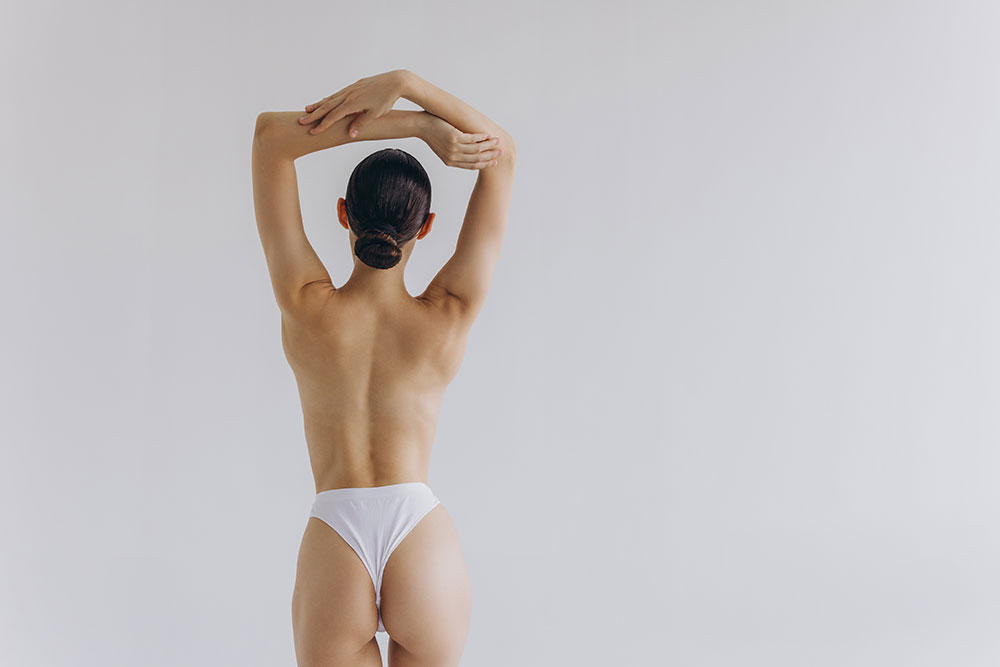
Another big thing? Word of mouth. Connect with other models—whether it’s through social media, online forums, or in person. The modeling community has a way of sharing experiences, so if someone has worked with a photographer who was respectful, supportive, and professional, chances are they’ll be happy to recommend them. Similarly, if a photographer has a reputation for making models uncomfortable or pressuring them into situations they don’t want, you’ll hear about that too. It’s about building a network of trusted connections to guide you in the right direction.
Once you think you’ve found someone you might want to work with, ask for references. Don’t be afraid to ask for feedback from other models they’ve worked with. A solid photographer will be happy to provide these and won’t be offended by the request. If they’re serious about professionalism, they’ll understand that you’re taking your career and your well-being seriously. If they’re hesitant or unwilling to provide references, you can safely assume they’re not the right fit for you.
Finally, always listen to that inner voice—trust your gut. If something feels off, don’t ignore it. No amount of impressive work or great reviews is worth sacrificing your peace of mind. You don’t have to work with someone just because they’re “famous” or “popular” in the industry. There are plenty of amazing photographers and artists who understand the value of mutual respect and will make sure you feel comfortable, supported, and empowered throughout the process. When you find that right person, it’ll feel natural. The connection will be there, and the result will be artwork you’re proud of.

Communicating Expectations and Comfort Levels Before a Shoot
One of the most important—and often overlooked—parts of nude modeling is the conversation that happens before the shoot even begins. A shoot is much more than just a set of poses and photographs; it’s about collaboration, trust, and understanding. If you don’t set clear expectations and communicate your comfort levels beforehand, you’re setting yourself up for unnecessary stress, confusion, or even potentially dangerous situations. So, let’s talk about how to approach this in a way that sets you up for success, while keeping everything professional, respectful, and enjoyable.
Establishing Boundaries First and Foremost
Before you do anything else, it’s crucial to think about your personal boundaries. What are you comfortable with? What’s off-limits? These are questions only you can answer, and it’s important to be completely honest with yourself. Maybe you’re okay with implied nudity but not full nudity. Perhaps you’re fine being nude in front of a photographer but prefer to keep your facial expressions more subdued. Take the time to think through your comfort zones in advance, even if it feels a bit awkward at first. This is your body, and your boundaries should be respected every single time.
Once you’ve established those boundaries, it’s time to communicate them clearly to the photographer or artist you’ll be working with. Don’t hold back—if you have limits, tell them upfront. A professional will appreciate your honesty and will work within those boundaries. If they seem to brush it off or push back, that’s a red flag. A true professional will understand that you’re setting these boundaries to ensure a positive, respectful environment. They should be willing to discuss your preferences and find a mutual understanding that works for both of you.

a. Get Specific About What You’re Comfortable With
Beyond the basic “yes” and “no” answers, dive into specifics. Do you want to pose with certain props, or would you prefer to keep things minimal? Is there a particular angle or perspective you’re more comfortable with? Maybe you’re okay being nude for the camera, but you’re not comfortable with close-up shots or certain lighting. Be direct about your preferences—the more detailed you are, the less room there is for misunderstanding.
It’s also important to express how you want the session to feel emotionally. Do you want a calm, meditative atmosphere? Or do you feel more comfortable with something dynamic and energetic? Discussing the tone of the shoot can help both you and the photographer prepare mentally for what’s coming.
b. The Photographer’s Role in the Conversation
Good photographers will want to understand your comfort levels just as much as you want to understand theirs. They should actively ask you about your boundaries and preferences. They might even offer a “pre-shoot briefing” where they walk you through their process and expectations. A photographer should never make you feel like they’re rushing you into anything or that you should accept something you’re uncomfortable with.
Another key piece of the photographer’s role is to explain the shoot in detail. What kind of set are you working with? What’s the atmosphere going to be like? Will there be others present during the shoot? Will they be using a team (like assistants or makeup artists)? Getting a clear picture of the shoot’s setup helps ease anxiety and gives you the confidence to say, “Yes, I’m comfortable with this” or “Actually, I’d prefer a different approach.”
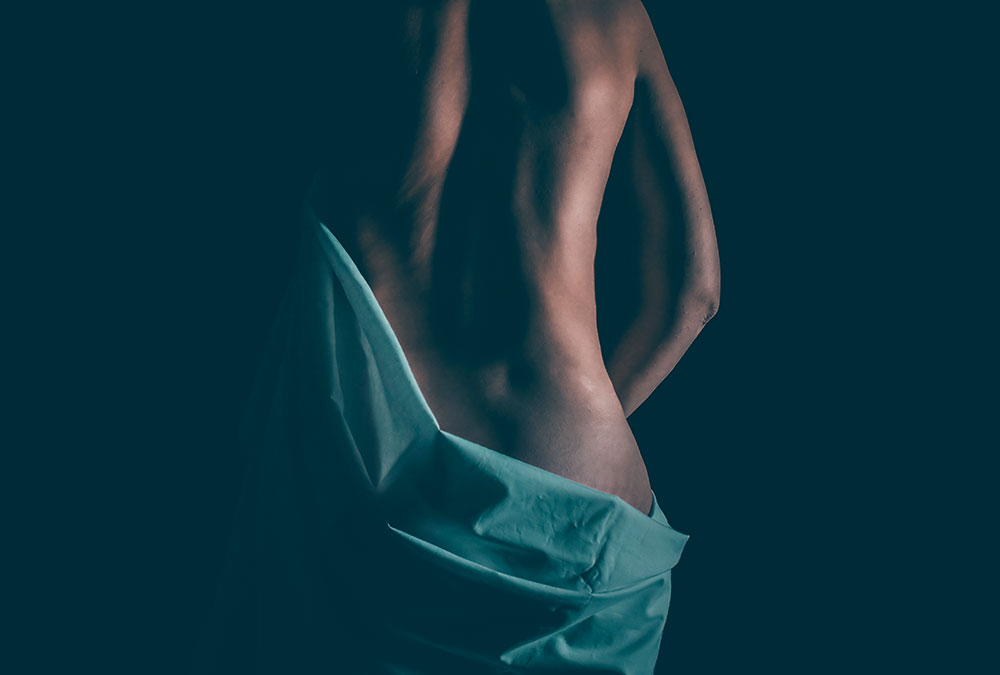
c. Always Have an Open Line of Communication During the Shoot
Once you’ve set clear boundaries and expectations before the shoot, remember that this is not a “one-and-done” conversation. Things can come up during the session that might make you uncomfortable. You might be asked to hold a pose that’s harder than expected, or the lighting could shift in a way that you didn’t anticipate. Check in regularly with your photographer or artist. If at any point you feel uncomfortable—physically or emotionally—speak up. A professional should be completely open to adjusting things on the fly to ensure that you feel safe and respected.
In fact, the best photographers are those who make constant, respectful adjustments to create an atmosphere of comfort. They should encourage you to let them know if something doesn’t feel right, whether it’s the pose, the temperature, the lighting, or even how you’re being directed.
d. Setting a Safe Word or Signal
If you’re especially concerned about the dynamic of the shoot or about expressing discomfort, setting a safe word or signal before the shoot can be a game-changer. It’s an agreed-upon word or hand gesture that lets the photographer know you’re not okay with something, without needing to explain yourself in the heat of the moment. This can be especially helpful in long shoots or in situations where there are a lot of moving parts (like working with a team or in a public space). The key is to make sure everyone is aware of this beforehand, so it’s understood as a quick and effective way to halt the session and address any concerns.
e. Mutual Respect: An Ongoing Conversation
At the heart of all of this is mutual respect. A professional photographer or artist will understand that their work relies on a healthy, comfortable collaboration. They should encourage you to be honest, open, and direct. They’ll be willing to compromise, adjust, and adapt as needed. If they respect you as a person, they’ll understand the importance of your comfort in creating art that feels true and authentic.
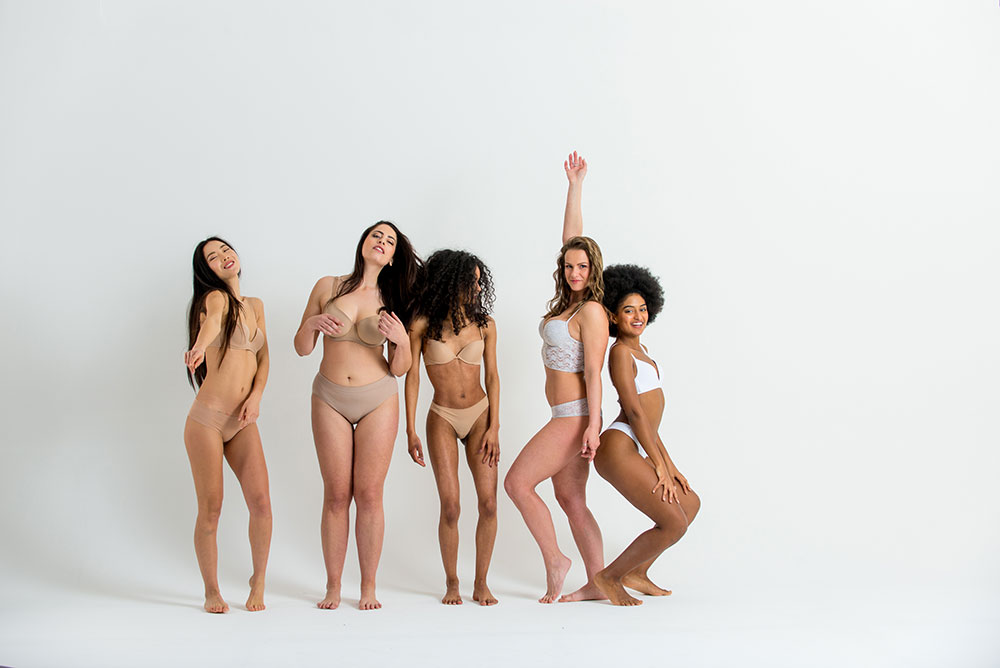
What to Expect During a Nude Modeling Session
When you step into a nude modeling session, it’s easy to feel a mix of excitement and nervousness. But, knowing exactly what to expect can help you feel more prepared and in control. Every session is a little different, but there are key things you can expect to happen, and a few things you should be ready for.
a. The Initial Conversation
Before you even start posing, the first thing that happens will likely be a conversation. A professional photographer or artist will want to make sure you’re both on the same page. They’ll ask about your comfort level, boundaries, and maybe even run through their vision for the shoot. This is the time to set clear expectations. You’ll talk about everything from how much nudity is involved to the kinds of poses you’re okay with. Don’t hold back here—if something doesn’t feel right or you’re unsure about something, speak up. A respectful photographer will listen and adjust accordingly.
Also, make sure to ask any questions you might have. For example, “Is anyone else going to be in the room?” or “How do you handle posing and movement?” This is a professional relationship, so don’t hesitate to have open dialogue. The more upfront and clear you are, the easier the session will flow.
b. Setting the Scene
Once you’ve talked everything through, it’s time to dive into the environment. Most of the time, the photographer will have the space ready for you—whether it’s a studio or an outdoor location. You might walk into a space that feels sterile and minimalist, with lighting setups, props, or backdrops ready. Or, if it’s a more natural shoot, you could be working in a studio with cozy vibes, or even a well-lit outdoor setting.
One thing to expect is the lighting. Photographers often have to adjust it a few times before they settle on the right setup. And you’ll probably be asked to pose in ways that let the light play with your body—highlighting certain parts and creating shadows on others. This can feel like a bit of a dance—adjusting your body, shifting angles—so the light captures your form in the best way possible. It may feel awkward at first, but once you get into a rhythm, you’ll start feeling more natural with the process.
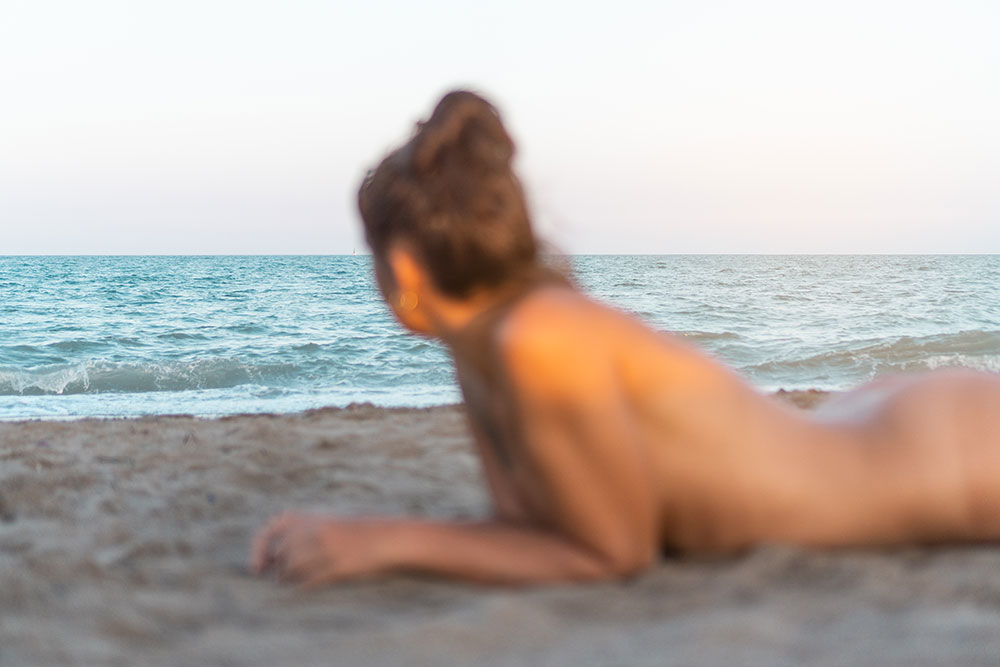
c. Posing and Direction
Expect the photographer to direct you throughout the session. They’ll likely ask you to move or hold a position for a period of time. The poses might feel slightly unnatural at first, but it’s part of the process. Holding still for long periods can get uncomfortable, so it’s important to communicate if something doesn’t feel right. If your arm starts to cramp or a position makes your body ache, don’t hesitate to ask for a slight shift or a break.
Some photographers will offer more detailed direction, like “Turn your body a little this way,” or “Lift your chin up slightly.” While it might feel strange at times, remember that their goal is to capture the most flattering and dynamic version of you in that pose. But also be open about how you feel; if you’re uncomfortable with a certain pose or angle, speak up. You should never feel forced into something you don’t want to do.
d. Checking In During the Shoot
A good photographer will check in with you throughout the session—asking if you’re okay, if you need a break, or if you want to try something different. The goal is to create a positive, respectful environment, so don’t be afraid to speak up. If you need a water break, if you feel like the temperature is too hot or cold, or if you feel like your energy is slipping, let them know. A professional will be flexible and will respect those boundaries.
Some photographers may also ask you to work with different expressions or energy levels during the shoot. For example, they might ask you to be more serene and relaxed, or they might encourage an expression that reflects a sense of power. This will vary depending on the concept and the mood they want to create in the images. This is a good moment to relax into the process and let your body language communicate more than just a still pose.

e. Handling Your Comfort and Boundaries During the Session
No matter how well you’ve communicated your boundaries beforehand, it’s important to keep communicating during the shoot. Things can change on the fly—maybe a certain angle feels uncomfortable, or you’re asked to try something new you didn’t anticipate. If that happens, simply ask the photographer to adjust or suggest something that works better for you. There is no shame in setting limits during the session if something doesn’t sit right with you.
If you’re posed in a way that you feel doesn’t align with your comfort or body type, it’s okay to ask for changes. You should never feel pressured to push through physical discomfort or emotional unease. This is about you and your body—don’t ever feel guilty for needing a break or a shift in direction.
f. The End of the Session
As the shoot wraps up, expect to have a brief debriefing with the photographer. They may ask you how you’re feeling, and you should take this opportunity to reflect on the shoot, too. How did you feel about the process? Were there any moments where you felt uncomfortable or unsure? You may also talk about next steps, like when you can expect the photos, whether they’ll be edited, and how you’ll receive them.
Afterward, the photographer may thank you for your time, and they might even give you some informal feedback about how the session went. In a positive, professional environment, there’s a sense of appreciation at the end of the session. This is a time for both of you to reflect on what worked well and what could be improved for future shoots.
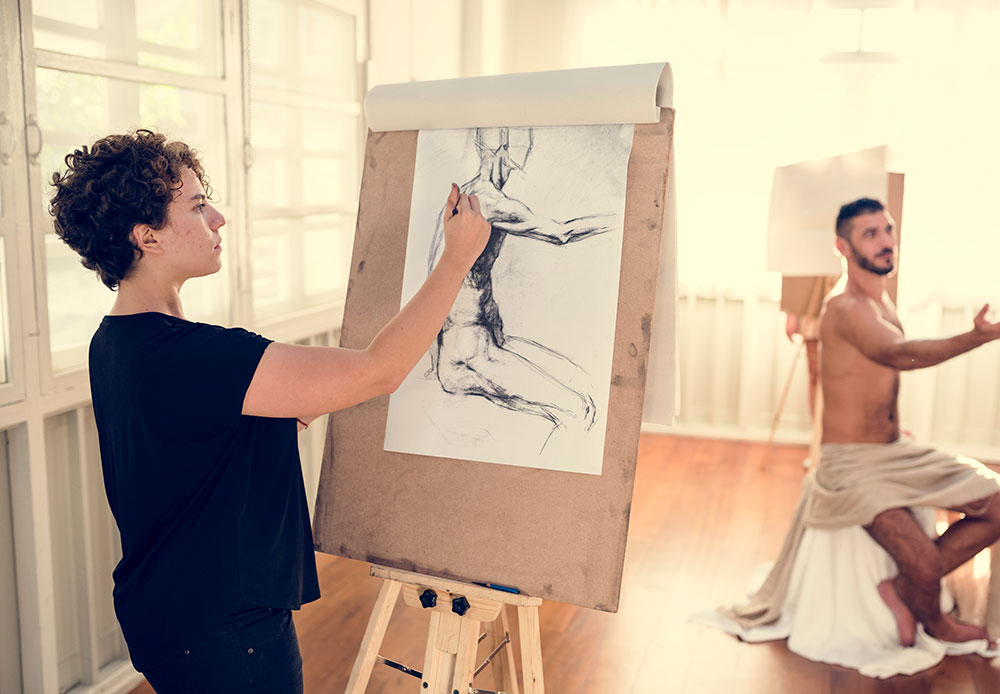
The importance of chemistry and trust between model and artist
In any creative collaboration, chemistry and trust form the foundation for success. When it comes to nude modeling, the relationship between the model and the artist—whether that’s a photographer, painter, or sculptor—becomes even more crucial. It’s not just about taking pictures or making art; it’s about creating an environment where both parties feel respected, safe, and inspired.
a. Building Trust from the Start
Before any photos are taken or brush strokes are made, trust needs to be established. Trust in this context isn’t just about believing the artist has the skills to capture or represent your body—it’s about knowing that your boundaries will be respected, your comfort is the priority, and your voice matters. If you don’t trust the artist, the shoot can quickly feel tense, uncomfortable, or even exploitative. This is especially true in nude modeling, where the vulnerability is higher and the stakes feel more personal.
The artist, too, needs to trust the model’s commitment to the process. Trust that the model will feel comfortable expressing themselves, giving their best effort, and collaborating fully to create the best possible outcome. This creates a mutual respect that sets the tone for the entire session.
b. Chemistry Fuels Creativity
When trust is in place, chemistry can begin to work its magic. Chemistry between a model and an artist isn’t necessarily about being best friends or having an immediate personal connection, but more about creating a flow of energy and creativity. It’s about understanding each other’s intentions and making sure those intentions align.
For a photographer, it’s about reading the model’s body language and knowing when to adjust the lighting or change the pose. For a painter or sculptor, it’s about interpreting the model’s form in a way that is both respectful and reflective of the model’s personality and the vision they’re trying to express. When chemistry is present, these artistic decisions feel effortless, and both the model and artist feel like they’re contributing equally to the creation of something meaningful.
The best work often happens when both parties are comfortable enough to take risks—whether that’s trying an unusual pose or experimenting with an unexpected angle. With the right chemistry, a model and artist will start to push the boundaries of what they can do together, both artistically and emotionally.
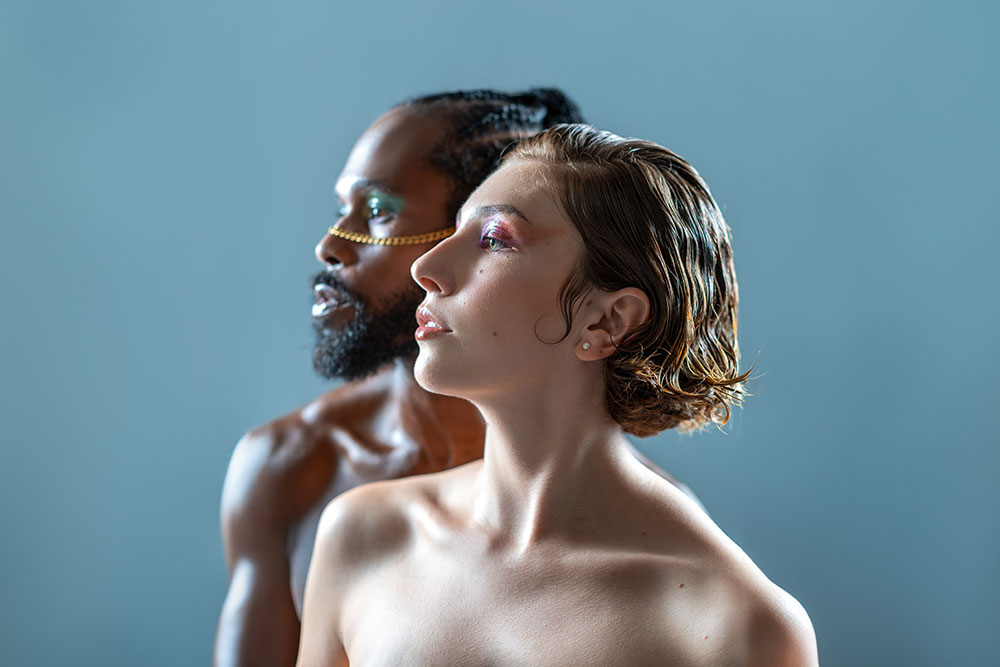
c. Safe Space for Vulnerability
Nude modeling inherently involves a level of vulnerability, both physical and emotional. A trusting, positive relationship creates a safe space where vulnerability can be embraced. When there’s mutual respect, the model feels free to express themselves without judgment, and the artist feels inspired to capture that raw authenticity.
This connection helps to minimize any feelings of awkwardness or discomfort that might otherwise creep in. Without trust, even the most well-prepared shoot can feel strained or forced. But when the model feels safe, confident, and understood, the result is often far more beautiful and authentic than either party could’ve imagined at the start.
d. Open Communication
Good chemistry isn’t just about good vibes—it’s also about open, honest communication. The best collaborations are those where both the model and artist feel comfortable giving and receiving feedback. Whether it’s adjusting a pose, changing a light, or trying a different angle, both parties need to be able to communicate freely without fear of judgment.
For example, if the model feels uncomfortable or something isn’t working physically, they should feel confident speaking up. Similarly, the artist needs to give clear directions and be receptive to the model’s needs and feedback. When trust and chemistry are in place, these conversations happen naturally and lead to better, more successful results.
e. Lasting Impact
The magic that comes from strong chemistry and trust often extends beyond the shoot itself. When a model and artist work well together, the images or artwork they create often reflect a deeper connection. You can see it in the way a pose feels natural, in the subtleties of expression, and in the energy between the two. It’s not just about the aesthetic; it’s about the emotional energy captured in those moments.
Also, building chemistry with one artist or photographer might lead to future collaborations. Once you’ve established that trust and understanding, you’ll be more likely to work together again, and perhaps even refer one another to other collaborators. In the world of art and photography, these relationships often become long-lasting, helping both the model and the artist grow and evolve in their respective careers.
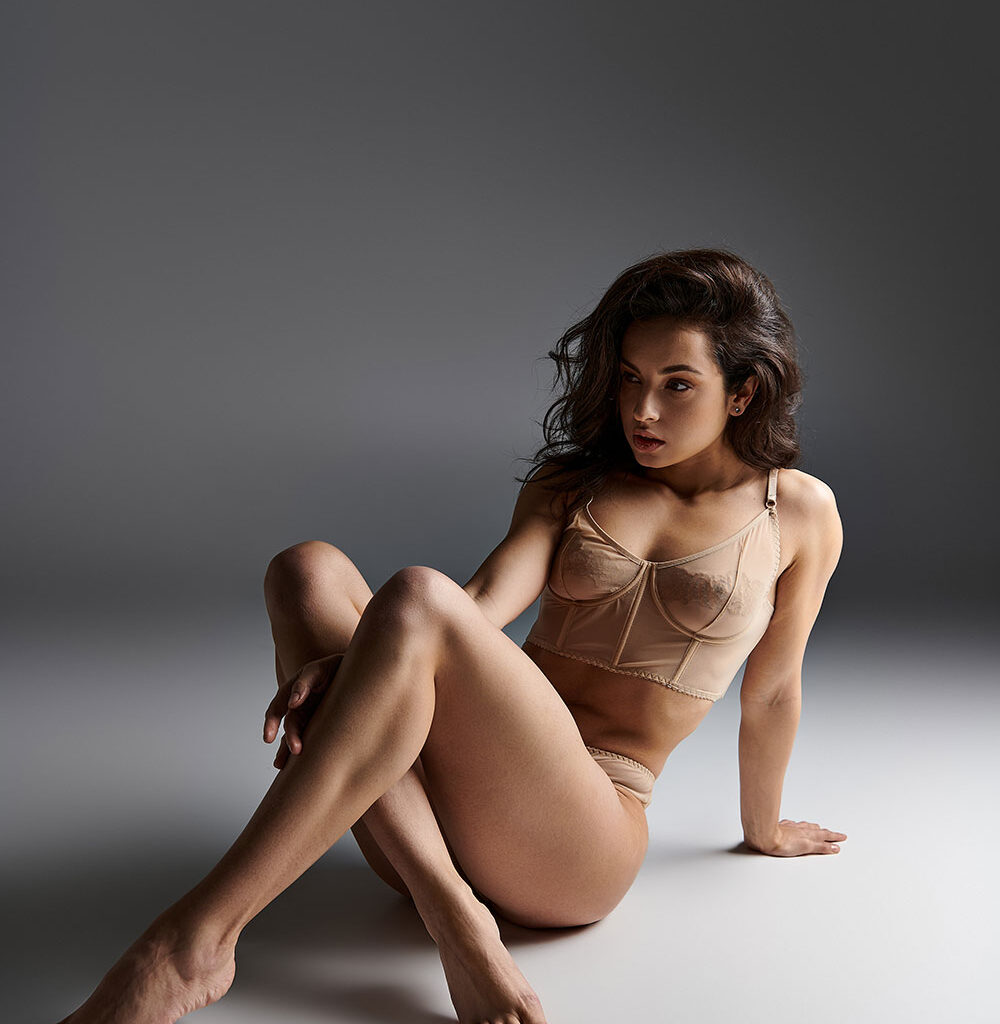
Understanding Artistic Direction and Adapting to Different Styles
When you’re stepping into the world of nude modeling, one of the most important things you’ll learn is how to adapt to different artistic directions. It’s not just about looking good in a pose; it’s about understanding the artist’s vision and making sure your body, movements, and energy align with that. You’re not just a model—you’re a collaborator in creating something meaningful, something that expresses emotions, ideas, and stories. So, let’s dive into how you can understand and adapt to different styles and artistic directions, and how that will make you feel more confident and comfortable in your work.
a. Getting On the Same Page with Artistic Direction
Before the camera clicks or the first brushstroke hits the canvas, it’s crucial to understand what the artist is looking for. Think of it like getting ready for a performance: if you know the role you’re supposed to play, it’s much easier to get into character. This is where communication really comes into play. The photographer, painter, or sculptor will have a certain vision in mind—whether it’s dramatic, ethereal, sensual, or raw—and it’s your job to make that vision come to life through your poses and body language.
It might sound intimidating at first, but honestly, the more you can ask questions and talk things through, the smoother it goes. Don’t be afraid to ask the artist, “What mood are you aiming for?” or “How do you want this shoot to feel?” You’ll find that the more clarity you have about the vision, the easier it is to slip into the role and show up with the energy they need. And trust me, when you’re on the same page, that’s when the magic happens.
b. Adapting to Different Artistic Styles
Let’s be real—no two shoots are ever the same. Every artist has their own unique style, and you’ll need to be flexible enough to adapt to each one. One shoot may have you striking delicate, elegant poses with soft lighting to create something dreamy and timeless. The next might require you to jump, twist, and turn to create something high-energy and daring. Flexibility is key here. Some photographers might want you to stay still, letting the light do all the talking. Others might ask you to move, bend, and get creative with your body.
The trick is not to be intimidated by these differences, but to see them as an opportunity to challenge yourself and expand your range. Sure, it might be outside your comfort zone, but that’s where the best growth happens. The more you practice adapting, the easier it will become. Eventually, you’ll develop an instinct for how to read a situation and adjust your body language on the fly.

c. Body Language and Expression
In nude modeling, your body language and expression are everything. They speak volumes—sometimes even more than the pose itself. Different artistic directions will ask for different kinds of energy from you. For example, if you’re doing something moody and dramatic, your body language might be more rigid, with sharp lines and a strong presence. Your facial expression could be pensive, focused, or distant. If the shoot calls for something soft and intimate, you might be asked to relax your body, soften your gaze, and create a sense of quiet vulnerability.
The beauty of nude modeling is that it gives you an opportunity to really play with your expressions. And don’t worry if you’re not always sure what’s expected—over time, you’ll learn to read the room. Sometimes you won’t even need words. You’ll pick up on the artist’s vibe through their tone, their eye contact, and their gestures. And as you get more comfortable, you’ll know instinctively how to shift your body to match the mood. If you’ve ever had a moment where you just felt like you were doing something right, this is it—it’s all about getting in sync with the artist’s energy.
d. Props and Elements in Artistic Direction
Sometimes, the artist may throw a curveball your way, adding props or environmental elements to the mix. Whether it’s a piece of fabric, an object, or even the setting of the shoot itself, props can make a big difference in how you pose. The key here is not to overthink it. If you’re holding something, it should feel natural—like an extension of yourself. Sometimes, you might be asked to interact with your surroundings, like leaning against a wall or sitting in a chair, and you’ll need to adapt your body to make those elements work.
Props are an amazing way to bring texture and interest to the shoot. But don’t worry if things feel a bit awkward at first. Again, it’s about practice and understanding how your body can flow with the objects and environment around you. Once you get in the zone, it won’t just be you posing with the props—it will feel like everything is part of a bigger picture.
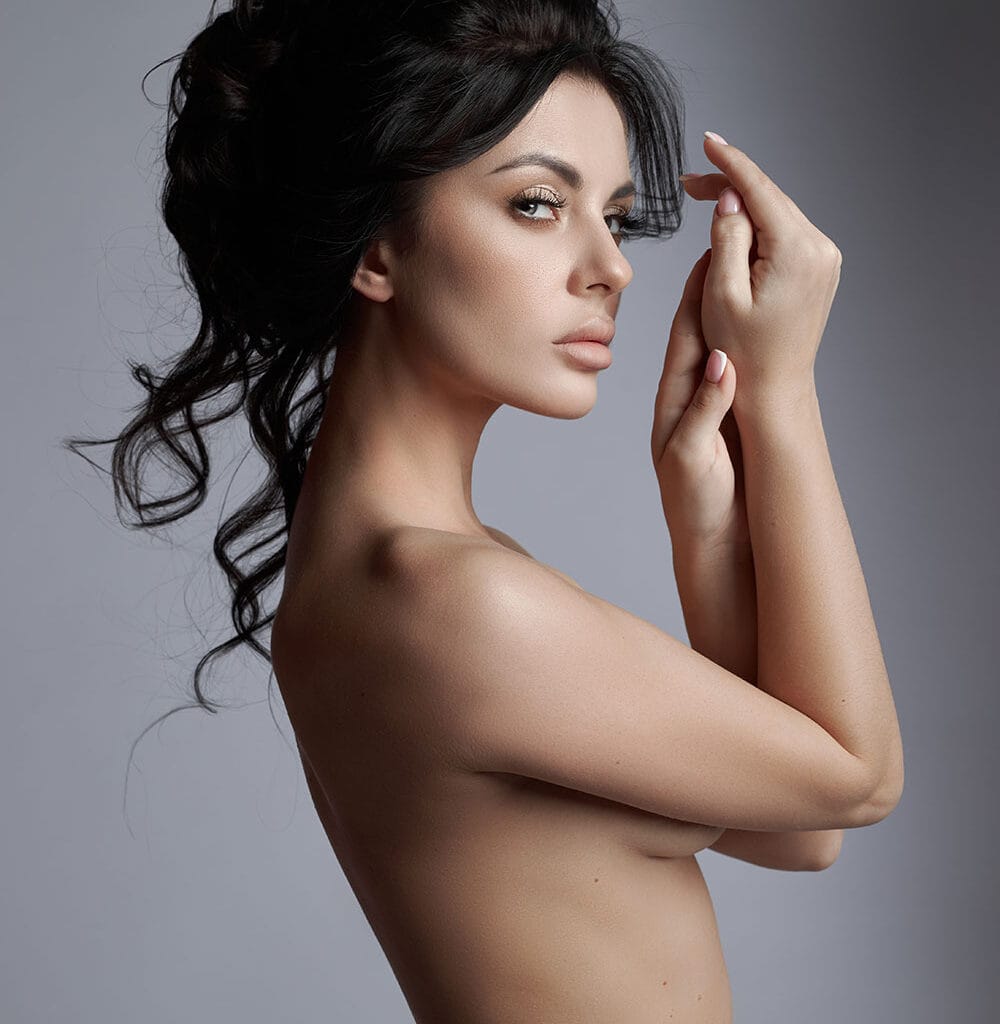
e. Taking Direction and Adapting in Real Time
When you’re working with an artist, you’ll get a lot of feedback throughout the session. And trust me, it’s not a bad thing—it’s actually a good sign. It means the artist is invested in getting the best shot and is paying attention to the details. Sometimes, you’ll need to make subtle adjustments to your posture or expression. This is where your ability to take direction comes into play.
Don’t let the feedback throw you off; it’s all part of the process. If the artist says, “Can you lift your chin just a little?” or “Let’s try that again with a softer expression,” it’s just their way of fine-tuning. Think of it like a team effort. And as you gain more experience, you’ll become better at translating their direction into something that feels natural for you.
Reviewing Images Before Giving Permission for Publishing
First things first, understand that you have the right to review the images, especially before they’re used in any public capacity—whether it’s a gallery exhibition, an online portfolio, or even a social media post. This is part of taking control over how your image is presented and how you’re portrayed. You’re not just a subject in a photograph; you are part of the creative process, and your voice matters.
a. Clear Communication is Key
efore any shoot begins, it’s a good idea to have an open discussion with the photographer or artist about the review process. Ask whether you will have the chance to look over the images before they’re published or shared. Some photographers might assume you’re okay with them using the images however they see fit, but it’s always a good idea to set expectations upfront.
If you have concerns about how the images might be used or where they might appear, address them clearly. Maybe you’re comfortable with the work being used for gallery exhibitions but not for online promotion, or you might be okay with artistic representation but not explicit content. By communicating your limits before the shoot, you can avoid any confusion or misunderstandings down the road.
b. What to Look For When Reviewing
When you do get a chance to see the images, take your time. You want to evaluate more than just whether you look “good” in the picture—you need to check how the photo represents you. Is it in line with the artistic vision you discussed? Does it make you feel empowered or vulnerable in a way you’re comfortable with? Are there angles or moments that feel too exposed or don’t align with how you want to be portrayed?
Also, think about the context in which the image will be used. How might others interpret it? Is the mood, expression, or body language in line with the story or message you want to convey? It’s easy to get caught up in the technical side of things—lighting, focus, and composition—but at the heart of it, you want to make sure the image feels authentic to your vision.
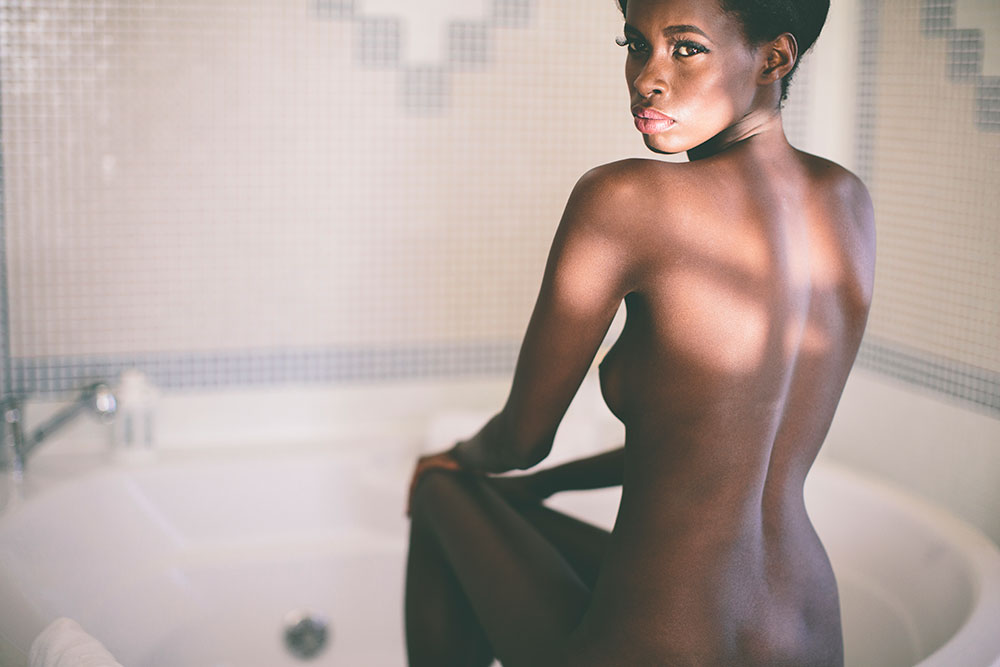
c. Setting Boundaries Around Usage
Once you’ve reviewed the images, you’ll have a clearer idea of whether you want to approve them for publishing. If you’re not comfortable with certain images, don’t be afraid to speak up. Maybe you want to request edits, crop certain parts, or ask for specific shots to be left out. You have the right to do so, and a professional photographer or artist will understand and respect your wishes.
It’s also important to consider where and how these images will be shared. Will they be posted on social media, included in a book, or used for promotional material? Sometimes, artists might want to showcase your work in ways that weren’t part of the original agreement. If that’s the case, you’re allowed to say no or to request additional compensation, depending on the situation. This is your image, your likeness, and your comfort—so always ask, “How will these images be used?” and ensure you feel good about the answer.
d. The Power of Consent
everything. You’re not just a passive participant; your permission and approval matter. By reviewing images before they go public, you ensure that your boundaries are respected and that your body and image are treated with the dignity they deserve.
If, for any reason, you’re not comfortable with the way your image is being handled or the final product, speak up. You have the right to set the terms of how you’re represented, whether you’re posing for fine art, fashion shoots, or any other type of modeling. In the end, it’s about ensuring that you are in control of how your art is shared with the world.
Continue Reading
- Everything About Nude Modeling / Part 1
- Everything About Nude Modeling / Part 2
- Everything About Nude Modeling / Part 3
- Everything About Nude Modeling / Part 4
- Everything About Nude Modeling / Part 5
- Everything About Nude Modeling / Part 6
- Everything About Nude Modeling / Part 7
Written By: Anh Nguyen
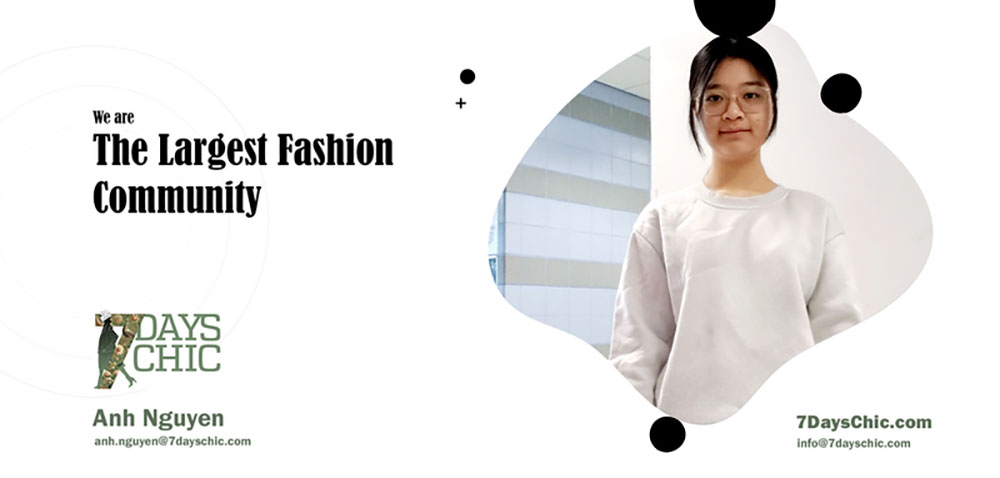


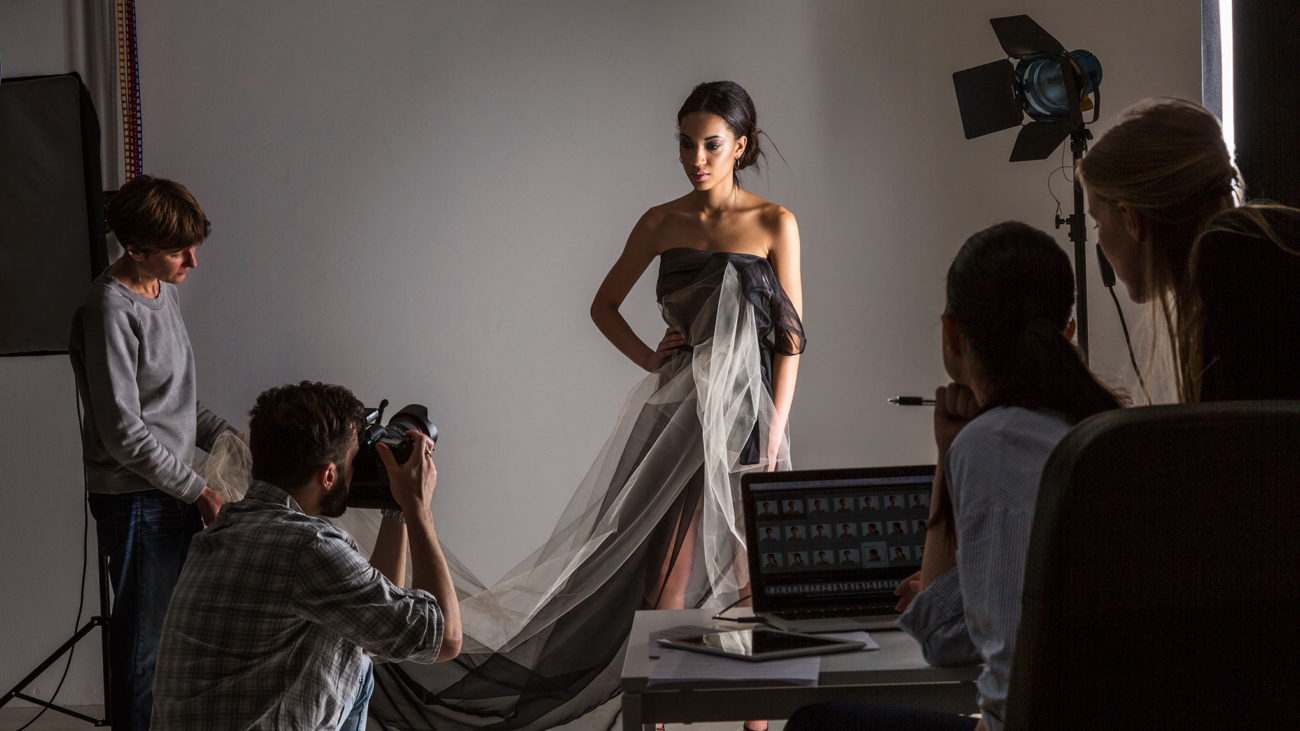
Add a Comment